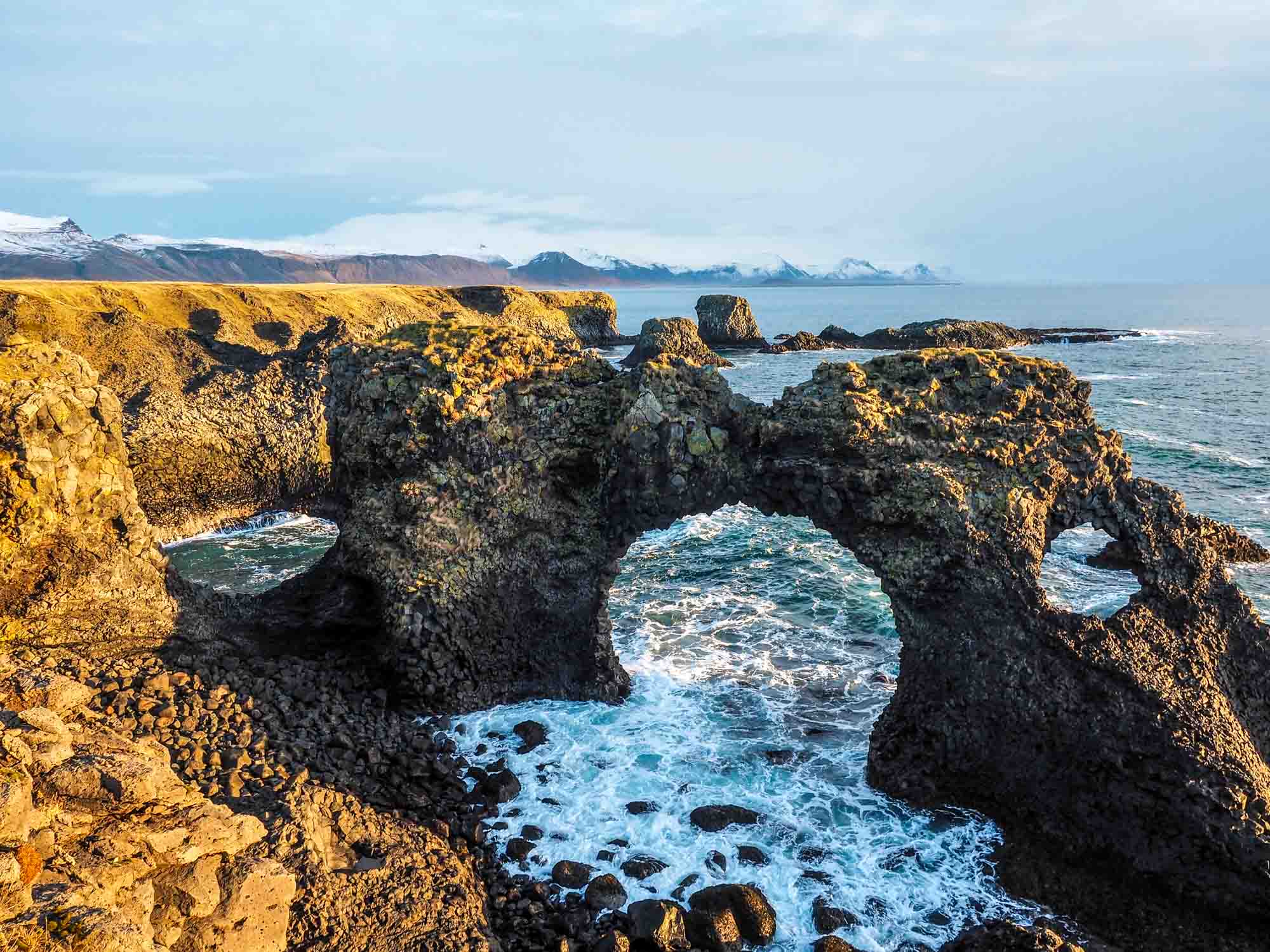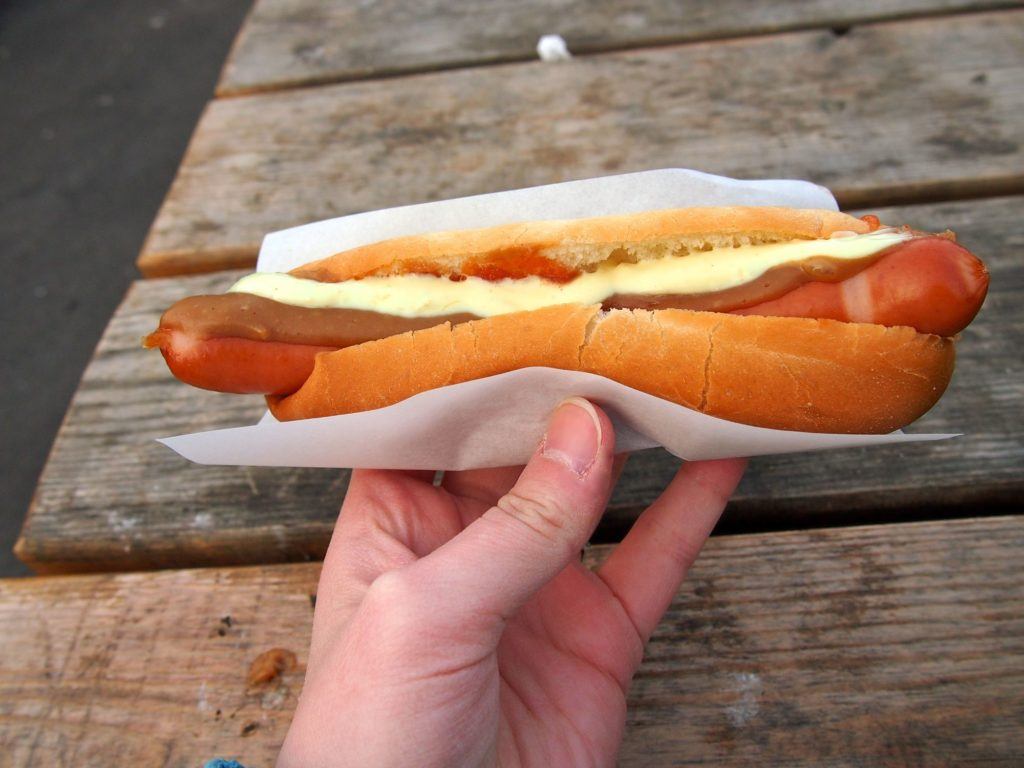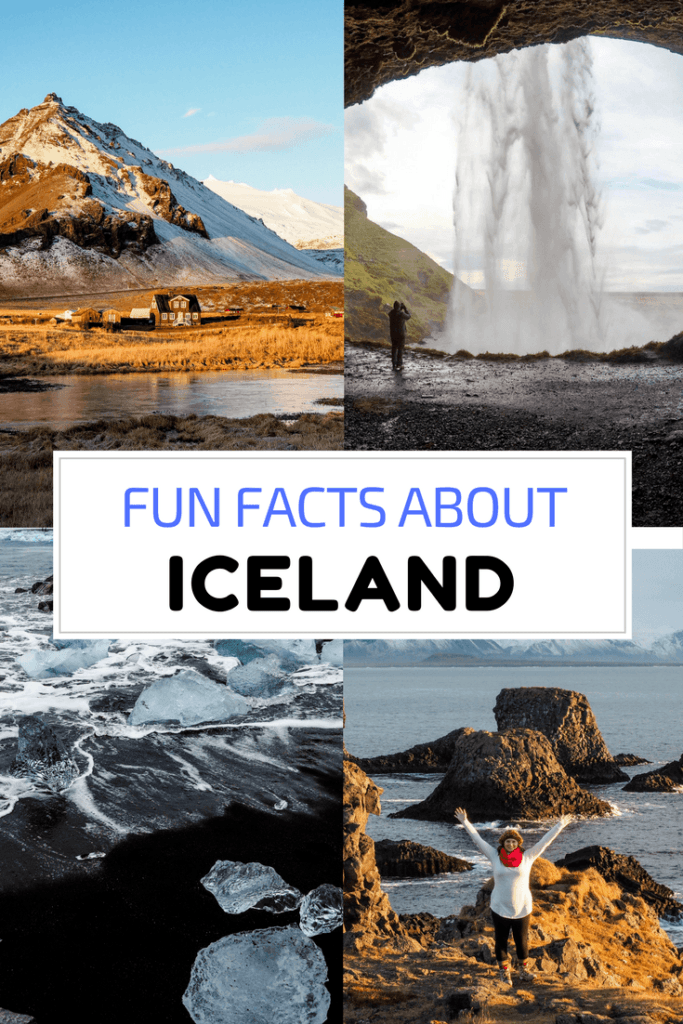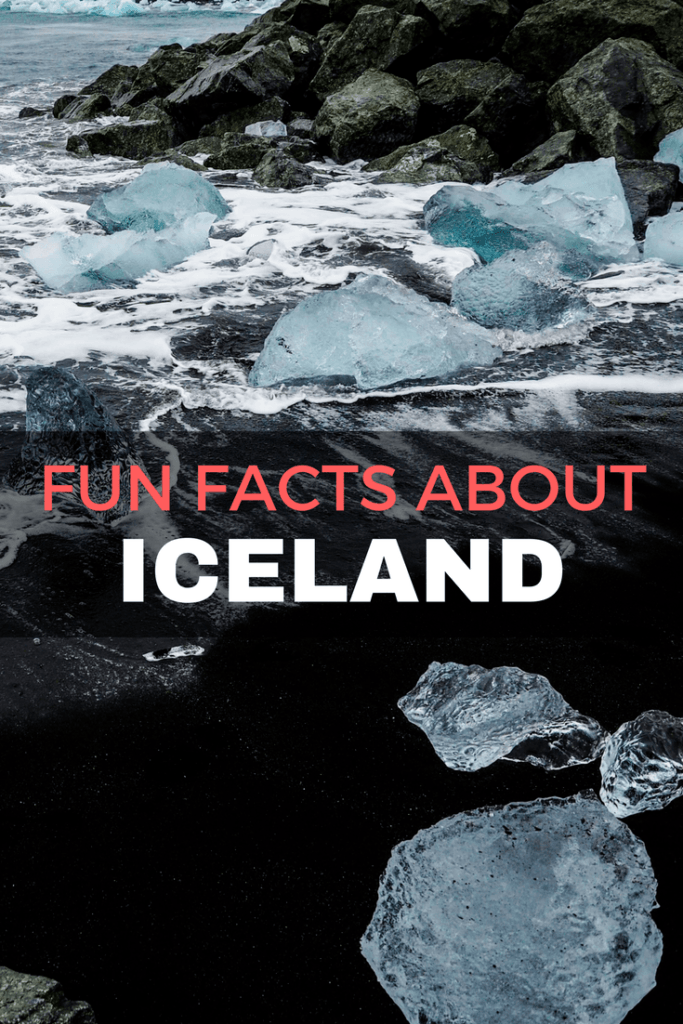20 Fun and Interesting Facts About Iceland

The Land of Fire and Ice has become a tourism darling in the past couple of years – and for good reason: Iceland is an incredible country, with features that you won't find anywhere else in the world.
I took my first trip to Iceland back in 2012, expecting to find a Scandinavian country with some cool scenery. And while I DID find those things in Iceland, I discovered that the country was full of surprises of all sorts that I hadn't been expecting.
These unique features are a big part of what has taken me back to Iceland more than once! (I've visited a total of 3 times, in fact.)


While definitely European/Scandinavian in nature, the country of Iceland is unique in so many ways that I felt its quirkiness deserved an entire post of its own. From elves and trolls to glaciers and volcanoes, here are 20 fun Iceland facts that make it the incredibly cool country that it is.
Here's a cool video from Iceland
20 Fun Facts About Iceland
1. Viking Ties

Iceland was settled by Vikings from Norway sometime in the 800s. This fact makes Iceland a fairly “young” country when it comes to settlement, and also contributes to its distinct cultural background. The Icelandic horses in the country today are unique in the fact that they are direct descendants from the horses the Vikings first brought over from mainland Europe.
RELATED: The Horses of Iceland
And a bonus fun fact for you: The Vikings are the ones who gave both Iceland and Greenland their names, purposefully mis-naming them both so that their enemies would hopefully go to ice-covered Greenland instead of following them to where they actually settled in Iceland.
2. First Parliament
Iceland is home to the very first parliament grounds in Europe. In the year 930 AD, the first Parliament met in Iceland in what is today Þingvellir National Park. The site has since been dubbed a UNESCO World Heritage Site because of its cultural, historical, and geographical significance.
3. Tectonic Plates

The “geographical significance” part of Þingvellir being dubbed a UNESCO site is due to the fact that this is one of only TWO places in the entire world where you can see two of the earth's tectonic plates meeting above the earth's surface (the other is in Africa). The North American and Eurasian plates jut up out of the ground here in Þingvellir, moving apart roughly 2 cm per year.
You can even go diving/snorkeling between the plates in nearby Þingvallavatn Lake.
RELATED: Iceland's Golden Circle
4. Volcanoes

Because it's located on the Mid-Atlantic ridge, Iceland is an incredibly active country geologically. There are more than 125 volcanic mountains in the country, a handful of which are still very active, and another handful that could easily awaken and become active as the country changes and grows.
Iceland experiences a volcanic eruption roughly once every 4 years, though the past few years have seen one eruption or more each year (we all remember Eyjafjallajokull, right?). Because of this constant activity, a good portion of Iceland is covered in lava fields.
5. Hot springs for all

Because of all the volcanic activity going on beneath Iceland, the country is filled with geothermal activity – and hot springs.
There are a couple famous commercial thermal pools and baths in Iceland (like the famous Blue Lagoon near the airport and the Mývatn Nature Baths further north) that are man-made but filled with natural geothermal water. And then there are the “wild” hot springs that people swim in that come in all different forms from small pools to heated rivers.
And in Iceland, these hot springs and pool are used year-round, even during the winter months.
RELATED: Relaxing at Iceland's Blue Lagoon
6. Eco-Friendly

Iceland is perhaps the most eco-friendly country I know of. And the kicker is, they don't even have to try very hard. Because the whole country is essentially “alive” with volcanic activity, the nation harnesses hydro and geothermal energy to power more than 80% of the country.
Very few fossil fuels are burned here (there are even some hydrogen buses driving around Reykjavik!), and most homes are heated using geothermal water that's pumped up from beneath cities and towns.
7. Glaciers

Surprisingly, another large section of Iceland (11%) is covered in glaciers. Glaciers are responsible for carving out everything in Iceland that hasn't been shaped by magma and earthquakes, making for a landscape more unique than any other country I've visited.
RELATED: Chasing Ice and Battling Mother Nature in Iceland
8. No Forests
Iceland was formed by some pretty harsh phenomena: volcanoes and glaciers. Much of the country was carved out by slow-moving glaciers, chewing up the land and gouging deep valleys into it.
But, contrary to popular belief, trees DO grow in Iceland. However, when the Vikings arrived, they forested the crap out of it, cutting down almost all the native tress in the country. Today, reforestation is being attempted, but you'll still definitely notice the lack of forests when you visit.
9. No mosquitos

Speaking of things that Iceland is lacking… the country is devoid of creepy crawlies like snakes and poisonous spiders. The island is also free from mosquitos. Scientists are puzzled by why mosquitos are missing from Iceland, but I somehow don't think anybody misses them!
Unfortunately, Iceland DOES still have biting midges (sand flies), which can sometimes be even worse than mosquitos.
10. Preserved Language
While very close to Danish and Norwegian, the Icelandic language remains totally unique. Words with far too many consonants abound, and syllables seem to just blur together.
Unlike other languages that have changed drastically over the centuries, Icelandic remains very close to its original roots. A Bible from the early 1500s (the first one printed in Icelandic, which can be found in a folk museum in Skógar) can still easily be read by Icelanders today.
Not unsurprisingly, the Iceland language has a lot of words to describe weather – including more than 150 different ways to describe wind.
11. Elves and Trolls

The majority of present-day Icelanders (more than 50%, I was told) believe in the existence of fantastical beings such as elves and trolls. There are many amusing stories and legends about these creatures, and Icelanders go so far as to postpone construction projects if it's believed that something is going to be built where elves currently live.
Large fallen rocks in fields are said to be frozen trolls, and one guide told us that the smell present in Iceland isn't from sulphur at all — it's the smell of the trolls' dirty bath water.
12. No McDonald's
As astonishing as it sounds, Iceland is one of the few countries I've been to where McDonald's restaurants do not exist! Yes, you can find KFC and even Taco Bell in Reykjavik, but forget about picking up a Big Mac or some Chicken McNuggets — you won't find them here! In fact, Reykjavík is the only capital city in Western Europe without a McDonald's.
McDonalds DID open a restaurant in Reykjavik back in the 1990s, but the chain was not popular enough to survive and pulled out, never to return.
13. Weird Foods

Iceland makes up for its lack of fast food with its bevy of interesting traditional foods. Along with things like whale, puffin, and dried fish, visitors can also try fermented shark, sheep's head, and even pickled ram's testicles. The even weirder part is that some of these dishes can be found in just about ANY kind of restaurant in Iceland (including a Mexican place that advertised “traditional Icelandic dishes”).
Oh, and the most popular food in Iceland? Hot dogs.
14. Commercial Whaling
Fishing is Iceland's main industry, and the nation remains one of just a few in the world that still allows commercial whaling. This, of course, is quite controversial, and has caused tension between the peaceful country and other nations.
15. Beer is cherished

Iceland celebrates Beer Day (Bjórdagurinn) each year on March 1. This is to celebrate that fact that beer is once again legal in Iceland. From January 1, 1915 to March 1, 1989 (that's 74 years!), beer was banned in the country.
The 1915 ban was much like Prohibition in the United States, and banned all alcohol in Iceland. Restrictions were lifted on some alcohol as time passed, with things like wine and liquor legal again by the 1930s. But it took a lot longer for the country to allow beer again.
Today, there are lots of microbreweries in Iceland (just like in most other countries), and you can even relax in a beer spa close to Akureyri in northern Iceland.
16. Small Population

The entire country of Iceland (which covers roughly the same area as the U.S. state of Kentucky) only holds a population of a little over 300,000 (as opposed to Kentucky, which has a population of more than 4.3 million). This small population makes for a largely rural country, and a capital city which feels like a really big small town.
17. It's all in the name
Like some other Scandinavian cultures with Viking histories, name conventions in Iceland are a little different. There are no traditional surnames here; instead, Icelandic people have patronymic last names, with their last names deriving from their's father's name. This is why almost all Icelanders' last names end in either -son or -dottir (daughter).
And, speaking of names, Iceland has a “naming committee” that keeps an official register of approved Icelandic names. There are many names that are banned, and anyone wanting to name their child something that's not already on the list has to submit it for approval.
18. Very little crime

There is little crime in Iceland, and virtually no violent crime. The country does not have a standing army, and its police officers do not carry guns.
19. A nation of book lovers
Along with having a high proportion of published authors (roughly 1 in 10 people in Iceland will publish a book, according to the BBC), the country has is home to one of my favorite holiday traditions – and it involves books.
The day before Christmas in most parts of the world is simply known as Christmas Eve. But in Iceland, it's more than that: it's the day on which family members exchange books as gifts, and spend the evening reading them.
There are so many new books published in Iceland before the holidays each year that there's a word for it: Jólabókaflóðið, or the Christmas book flood.
20. Northern Lights and Midnight Sun

Being located very close to the Arctic Circle, Iceland experiences long winter nights and long summer days, with almost 24 hours of darkness/twilight in December and nearly 24 hours of daylight in June.
Because of this, Iceland is a great place to see both the Northern Lights and experience the Midnight Sun. Though, both of these can be made difficult to see thanks to Iceland's ever-changing weather.
RELATED: 12 Crazy But Cool Things You Can See in Iceland
Practical Iceland info
Thinking of planning your own trip to Iceland? Here are a few tips:
How to get to Iceland: Iceland is just a 4- or 5-hour flight from the East Coast of the US, or about 3 hours from the UK. There are multiple airlines that fly there, including some budget airlines.
Where to stay in Iceland: Reykjavik is a great base, especially in the winter months since most tours start and end there. I recommend the Rey Apartments for both location and coziness (plus, having a small kitchen helps cut down on food costs!).
Book your accommodation in Iceland:
Booking.comWhat to pack for Iceland: Essentials for winter include silk leggings and a thermal shirt, warm socks like Heat Holders, a waterproof outer layer (I like my Columbia ski pants), and some winter hiking boots. (And I recommend most of these no matter what season you're visiting!)
And if you're visiting Iceland in summer? You'll definitely still want warm layers, a good rain jacket, and waterproof hiking boots.
Check out my complete Iceland packing list for more suggestions!
Read more about Iceland:
- Tours Worth Paying for in Iceland (and When to Save Your Money)
- 12 Crazy But Cool Things You Can See in Iceland
- A 10-Day Itinerary for Iceland in Winter (Without Renting a Car)
- 48 Hours in Reykjavik
Which of these Iceland facts surprised you the most?
Pin it for later:

Amanda Williams is the award-winning blogger behind A Dangerous Business Travel Blog. She has traveled to more than 60 countries on 6 continents from her home base in Ohio, specializing in experiential and thoughtful travel through the US, Europe, and rest of the world. Amanda only shares tips based on her personal experiences and places she's actually traveled!












Did you take these pics? They are phenomenal. Especially the last one wow!!!!!!!!
Yup, I took all of these! 🙂
And has anyone told you the Icelandic joke yet?
Q: ‘What should you do when you’re lost in a forest in Iceland?’
A: ‘Stand up.’
I heard it from three different people and laughed politely every time.
Haha, yes, I heard it multiple times as well! Love it.
Okay, I TOTALLY want to live in a country where the majority of the population believes in elves!! And with landscapes like that, it would be like living in a Tolkien novel!
Yes, if New Zealand didn’t exist, I could totally picture Iceland as Middle-Earth!
Fasntastic pictures and info. This was already on my list of “must-see” places, but now I feel like I need to really plan the trip. Can’t wait to read more!
Thanks, Juliann! You should definitely consider a trip there soon!
Sounds like an amazing place! I love that so many people believe in trolls and elves. I bet there are some amazuing stories out there. And no McDonald’s? How weird! Not that would neccessarily miss it, but I do wonder why since there are the other big fast food chains…
I love the trolls and elves, too. I feel like it just makes the place seem even MORE unpretentious. I want to go back already!
I once read in a very old issue of Reader’s Digest that heating is very cheap in Iceland. This is because of the volcanoes which heats the water in the place.
On another note, I wonder what will happen if all languages were as unchanged as Icelandic. Perhaps we can even chat with the likes of Shakespeare, right?
Yup, most people’s electric bills are less that $30 per month in the winter, I was told, because the heating is all done by geothermal water, which is super cheap! I wish we had volcanoes in Ohio… lol.
Ok, your photos are amazing. I’ve been wanting to visit Iceland for years and now I’m even more desperate to go! I especially like the bit about the elves and trolls.
Although, the no McDonald’s might be a bit of an issue for me… 😉
But just think how many weird food adventures you could have, Lauren!! 😉
And stay tuned, because I have a TON of photos left to share!
I don’t know which of these facts is more interesting. No wonder the landscape is so different from what we are used to see. The weird foods fact caught my eye since my husband is always trying to get his hands (or mouth) on different kinds of animals. Which ones you tried?
I was not brave enough to try the fermented shark, but I did try whale and puffin and plenty of seafood. (I have a post planned about it in the near future, so stay tuned!)
Iceland had one McDonald’s but it went out of business several years ago.
Yes, I hear they keep trying, but it just doesn’t take. Which, frankly, is amazing!
No mountains, only valleys?…Definitely an interesting fact…
According to one guide, yes. Of course, they LOOK like mountains, and some small ridges ARE formed by earthquakes and solidified lava, but yes, most of the country was carved out by glaciers!
mostly Icelandic fishing minke whales ,,its not thruth dont belife everything you have heard just few whales cauth each year ,,but we eat fish and lamb and alkind of food , ,,
I learned so much from this post and your photos made me want to visit even more. I know you must have the best time. Can’t wait to read more.
Glad to hear you learned a few things! I certainly did, too. And yes, I had a really great time!!
I knew quite a few of these facts but I had no idea that 50% of Icelanders believe in elves and trolls. How interesting. And no McDonalds? Awesome!
I was blown away by the elves/trolls thing, too. Definitely planning to write about it soon. The number could possibly be even higher!
I’m from iceland and it’s kind of rare that people around here believe in elves 🙂
I don’t know anybody who believes in it for an example
We like to tell a story but our old story that is called Þjóðsögur are full of all kinds of story abot trolls ghosts and elfs ,,and also if people like to se why we have fun of this storys open SNORRA EDDA ,,there can you see why these storys live,,
The best news is no McDonalds. The geology sounds most interesting. And the food enticingly different. Sure look forward to more. I suppose you are back already.
I LOVED that there was no McDonald’s there. Apparently the franchise has been trying for years, but Iceland just isn’t interested!
I am indeed back already, but I have a ton of Iceland content coming up, so stay tuned to learn a lot more about this very cool country.
I’m afraid I’m gonna have to burst your No-McDonalds bubble. We had several McDonalds restaurants in Iceland for many years and Icelanders not wanting them here is not the reason they’re gone. Apparently, McDonalds has this rule about the meat products all being from them, perhaps even vegetables and bread also. With the banks collapsing in 2008, one of the side affects was the falling of the Icelandic currency, making import insanely expensive. I believe the Icelandic company, running McDonalds here, tried to get an exception from this rule, because we have excellent sources of meat, corn and vegetables in Iceland, but it wasn’t granted. Their only other option was to shut McDonalds down, which they did, but instead they opened a new place called Metro. Run by the same owners at the same locations, driven by the same business model, even has a large M in it’s logo and the same sterile service as all those American fast food chains.
Shhh, don’t burst my bubble! Lol. It’s much nicer to think that Iceland just didn’t want any McDonalds’. 😉
Not all of ours no mountains are flat on the top , and our food is not weird , if Icelandairs had not eat all the sheep we had not live here for centurys , people had bad houses so they eat everithing they could , about 100 years was people still living in turvhouses with non convenience , but not all , the changing had started , I still have heard about people that had grown up in that kind of houses, je we eat sheep heads and its very good , my mother is from Germany and she love to come to me and my housband to hafe lambhead for dinner, THE shark and dryed fish is jummy ,,,
Actually Reykjavik did have two McDonalds in the city but due to the company’s need for consistency in the food, everything had to be shipped into the country. This resulted in the most expensive McDonalds in the world that simply could not be sustained. The business model works in most places but not Iceland. When I was there, I didn’t miss a Big Mac either.
Yup, I heard the McDonalds story – I’m not sad about it not existing in Iceland either!
Super interesting post! I really want to visit Iceland one day and I learned a bunch of things here 😉 Looks like you had a nice trip!
Thanks! And yes, it was a very good trip. Stay tuned for plenty more!
Iceland has been on my dream list for such a long time. I’m attracted by the nature, its wilderness, its traditions. The only thing that really disturbs me is commercial whaling. How can this possibly still happen? I know that the climate is very hard but nowadays there’s no need too hunt whales for eating (and who knows what else they do with them…).
As you wrote, commercial whaling is a controversial matter. This doesn’t mean that I won’t go to Iceland if I have the chance, but for sure I won’t taste at whale meat 🙂
It had been on my list for a couple of years, too, and I’m really happy that I finally got the chance to go! I had such a great time.
The commercial whaling issue is both troubling and interesting. They did a feasibility study a couple years ago, and now have quotas on the number of whales that can be caught each year. And they mostly fish for minke whales, which are not endangered. But yeah, still definitely controversial. I feel like it’s just such a part of their culture that they just find it normal to continue.
“and who knows what else they do with them” … what do you think REALLY think we also do with them ?
Whaling in Iceland is absolutely minimal. What surprises me is how much focus there is on Iceland killing a single dozen of whales per year, while mainland European countries are literally cleaning up all the cod out of the Atlantic? At least there’s a good reason to eat whale, first of all, it’s so full of omega fatty acids and plus it’s absolutely delicious!
ongly few whales are cauth, but in the old days sometimes a whale did die and did stranded on the beach , sometimes people did cut off a meat and eat it if the meet was fresh ,,but if it happend to day the moby are let to rot , one whale are now in museum in Húsavík